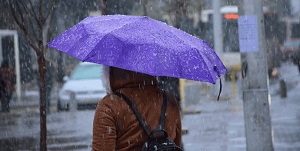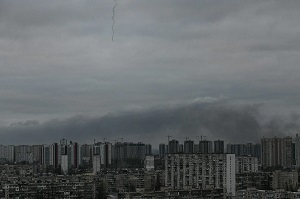UN: Floods Affected Over 288,000 People in Sudan

Asharq Al-Awsat
Heavy rains and flash floods affected over 288,000 people across Sudan as of September 16, the UN Office for the Coordination of Humanitarian Affairs (OCHA) reported.
Over 43,700 homes were damaged, and an unconfirmed number of public infrastructure facilities and farmlands have been affected.
Heavy rain and flooding have been reported in 13 out of 18 states. Aj Jazirah, South Darfur, Gedaref, and West Darfur are the most affected states.
The Government, led by the Humanitarian Aid Commission (HAC), and humanitarian partners have started providing life-saving assistance to people affected. However, prepositioned relief items are being depleted and there is an urgent need to replenish stocks, especially if the humanitarian situation deteriorates further, said OCHA.
In support of the flood response, the Sudan Humanitarian Fund (SHF) has allocated $7.7 million to 14 NGOs in 15 states to finance swift humanitarian response when needed.
In addition, some $7 million has been allocated to four UN agencies for the procurement of emergency stocks. Another $3.5 million is available for floods rapid response activities.
In 2020, almost 900,000 people across 18 states were affected in the worst flooding in the country in 100 years.
Over 140 people died, around 18,000 homes were destroyed.
An estimated 2.2 million hectares of agricultural land was flooded, representing 26 percent of cultivated areas in 15 assessed states.
Flash floods submerged villages and caused immense damage to infrastructure, including dams, roads, bridges, and highways.
Due to unreliable drainage systems, there was stagnant water in different locations, posing a risk to health outbreaks as pools of water become breeding grounds for water-borne and vector-borne diseases such as cholera, dengue fever, rift valley fever, and chikungunya.
Hygiene and sanitary levels plummeted due to flooded latrines and contaminated water supplies, preventing people from exercising necessary COVID-19 prevention measures.
Latest News
-
 Netanyahu to Meet Trump in US on Monday for Talks on Iran, Gaza, Hezbollah, Syria
Netanyahu to Meet Trump in US on Monday for Talks on Iran, Gaza, Hezbollah, Syria
-
 JMD forecasts heavy rain, brisk winds, low visibility
JMD forecasts heavy rain, brisk winds, low visibility
-
 Prince Hassan congratulates Christians on Christmas
Prince Hassan congratulates Christians on Christmas
-
 Zelensky says Kyiv attack shows Russia does 'not want to end the war'
Zelensky says Kyiv attack shows Russia does 'not want to end the war'
-
 Same group behind Damascus church attack bombs Homs mosque
Same group behind Damascus church attack bombs Homs mosque